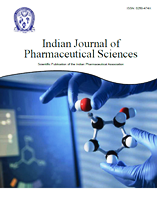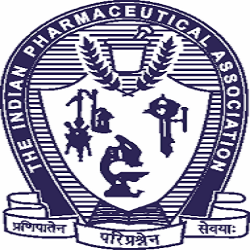Abstract
Synthesis, Characterization and Evaluation of Antidiabetic Effect of Allium sativum (Garlic) Silver Nanoparticles on Alloxan-Induced Diabetic Rats
Department of Veterinary Pharmacology and Toxicology, College of Veterinary Science and Animal Husbandry, Dau Shri Vasudev Chandrakar Kamdhenu Vishwavidyalaya (DSVCKV), Durg, Chhattisgarh 491001, India
Correspondence Address:
Aalisha, Department of Veterinary Pharmacology and Toxicology, College of Veterinary Science and Animal Husbandry, Dau Shri Vasudev Chandrakar Kamdhenu Vishwavidyalaya (DSVCKV), Durg, Chhattisgarh 491001, India, E-mail: iamaalisha0412@gmail.com
Diabetes mellitus, affecting approximately 25 % of the global population, remains a significant health challenge due to limited effective treatments. Nanotechnology, particularly green-synthesized silver nanoparticles, offers promising potential for innovative drug delivery systems. Allium sativum (Garlic), known for its antidiabetic properties, can be utilized in combination with nanotechnology to enhance therapeutic efficacy. This study aimed to evaluate the antidiabetic activity of green-synthesized silver nanoparticles prepared using aqueous garlic extract according to standard procedures and their effect was assessed on relevant enzymes associated with diabetes. For this thirty-six adult Wistar albino rats were divided into six groups each having six animals. The induction of diabetes in rats was by a single intraperitoneal injection of alloxan (150 mg/kg body weight). Rats were grouped as follows: Group I (NC): Normal control treated with distilled water (0.1 ml/kg b.wt.). Group II (DC): Diabetic control without any treatment. Group III (Standard): Treated with Glibenclamide (500 µg/kg b.wt.). Group IV (Garlic Extract): Treated with alcoholic garlic extract (400 mg/kg b.wt.). Group V (Silver nanoparticle): Treated with garlic antidiabetic activity of green-synthesized silver nanoparticles (80 mg/kg b.wt.). Group VI (Garlic extract+standard): Treated with a combination of Glibenclamide (500 µg/kg b.wt.) and garlic extract (400 mg/kg b.wt.). Treatment was initiated after 72 h of diabetes induction and continued for 15 d. Characterization of antidiabetic activity of green-synthesized silver nanoparticles was performed using ultra violet-visible spectrometry, Zeta potential analysis, and scanning electron microscopy. The results revealed that the synthesized antidiabetic activity of green-synthesized silver nanoparticles exhibited spherical to irregular shapes with an average size of 45 nm. The blood glucose levels were significantly lower (p<0.05) in rats administered Garlic antidiabetic activity of green-synthesized silver nanoparticles when compared with the diabetic control group. Furthermore, administration of Garlic extracts and Garlic antidiabetic activity of green-synthesized silver nanoparticles attenuated oxidative stress by decreasing malondialdehyde levels, enhancing reduced glutathione activities and improved serum protein levels, reinstated the lipid profiles and renal parameters to nearly normal levels in diabetic rats. The results reveal that Garlic-antidiabetic activity of green-synthesized silver nanoparticles exert their antidiabetic effects through the modulation of glycemic and atherogenic indices as well as the mitigation of free-radical-mediated damages. The present findings revealed that Garlic silver nanoparticles significantly improved the alloxan-induced diabetic changes in various treated rats and might be used in the treatment/ management of diabetes.
Full-Text | PDF



